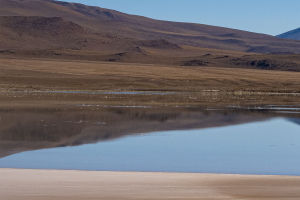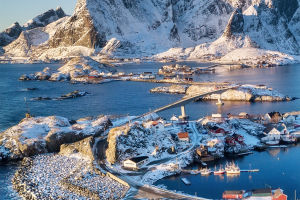Plateau lakes are a loosely defined category of lakes that are typically situated at high elevations and are predominantly tectonic in origin.
Those located within endorheic zones are generally considered endorheic lakes, as they are the final destinations of rivers in the region. The Qinghai-Tibet Plateau Lake Group is the largest grouping of plateau lakes in the world.
The formation of plateau lakes is intricately linked to the development history of the plateau as a whole. In particular, the strong uplift caused by the Neotectonic movement during the Quaternary period has greatly impacted the natural environment of the plateau, resulting in significant changes to the development of plateau lakes. This includes the formation and structure of lake basins, the deposition patterns of lakes, the evolution of lakes, and the extinction of some lakes, among other factors.
Even those unfamiliar with Salt Lake have likely heard of its nickname, "Mirror of the Sky." This moniker was first given to the Salar de Uyuni salt flats in Bolivia and has since become a popular term throughout Asia.
Stretching approximately 250 kilometers from east to west and 100 kilometers from north to south, the Uyuni salt flats cover an area of 10,582 square kilometers, making them the world's largest salt-covered wilderness. The region is rich in rock salt and gypsum, and locals often stack small salt mounds about 1 meter in height to dry in the sun.
Approximately 40,000 years ago, the Uyuni Salt Flats were part of a prehistoric giant lake known as Lake Minchin. Over time, the lake dried up, forming two major saltwater lakes and two major salt flats, one of which is the Uyuni Salt Flats.
During the rainy season, which lasts from December to April, the salt flats transform into a salt lake, creating a breathtaking mirror-like reflection of the sky. During the dry season, which lasts the remainder of the year, the lake fades to a pale white color. The Uyuni salt flats are often referred to as the Bolivian salt lake, which is not entirely accurate as this only describes one of their forms.
If you've seen pictures of the Uyuni Salt Flats, you'll understand how fitting the moniker "mirror of the sky" truly is. The endless expanse of white wilderness is covered with a layer of water during the rainy season, resulting in a stunning and ethereal view of the water and sky. Walking through this pristine white world, you'll feel as if you've been transported to a paradise of pure beauty.
At night, the Uyuni Salt Flats become the ultimate romantic destination. Situated at an altitude of approximately 3,700 meters in the mountains, the fresh air and high visibility make it an ideal spot for stargazing. The entire clear Milky Way can be seen reflected in the water, making it feel as though you're walking through a vast universe with thousands of stars beneath your feet.
A foreign visitor has captured the starry sky over the Uyuni salt flats through time-lapse photography, so be sure to check out the video to experience the ultimate romantic beauty of the stars.


